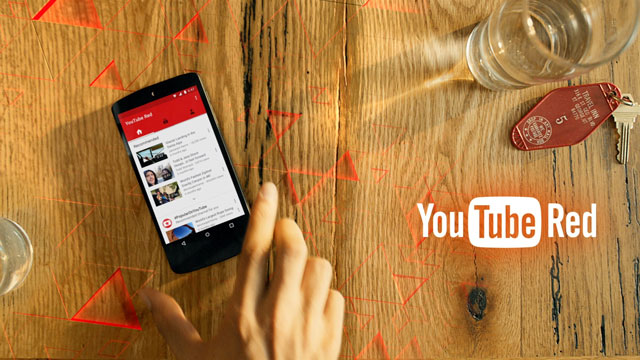 How much would you pay to use YouTube? It’s a serious question. What if YouTube removed all those adverts? What if it offered exclusive content? Google, which owns YouTube, may soon have definitive answers to those questions.
How much would you pay to use YouTube? It’s a serious question. What if YouTube removed all those adverts? What if it offered exclusive content? Google, which owns YouTube, may soon have definitive answers to those questions.
In late October last year, Google launched YouTube Red, a subscription service that strips out all the ads and gives you other nice options like offline viewing. At US$10/month, it’s not going to break the bank, but who would be prepared to pay anything to use a service that has always been free?
Google’s plans for YouTube Red are far more ambitious than some moderately handy features. In early December, it emerged that YouTube was pursuing rights to stream movies and television series as part of the Red offering.
And next week YouTube will launch its first batch of exclusive original content: three movies and a reality show. These are available only to Red subscribers and those willing to pay for each piece of content individually.
All of this exclusive content was produced by YouTube’s most popular “partners” — independent producers who have used the platform to win global audiences. The company’s canny decision to begin sharing advertising revenue with these young creatives back in 2007 has created dozens of “YouTube stars” with tens of millions of fans each.
But while YouTube has been making a few talented producers rich, it has (probably) been losing money. Although Google never splits out YouTube’s financial numbers, many analysts estimate that the platform still runs at a loss. Given that its costs around $4bn/year just to run the infrastructure that powers the service, that’s an awful lot of effort for zero return.
With YouTube Red, Google is clearly taking aim at what it sees as its real competitors: premium content providers like Netflix and Hulu. The $10/month price point matches both of those services exactly.
But while the price may match, YouTube Red is a long way from being competitive with the likes of Netflix. The darling of the paid streaming market, Netflix has been cranking out original shows for three years now.
Some, like House of Cards, have won multiple awards and devoted fans around the world. This year alone, Netflix plans to spend either $5bn or $6bn on original content (depending on which sources you believe).
Hulu has had less success on the original content front, but has the backing of some of the US’s largest television networks. It is the only place you can watch certain shows online — CSI and Seinfeld, for example — and like Netflix it has a huge catalogue of non-exclusive content.
And Google isn’t the only Internet giant moving into original programming. Amazon is already producing over a dozen original series this year, and has a dozen more in the pipeline. Its Amazon Prime platform, through which it distributes this content, is growing steadily in popularity.

Google has stumbled more than once in the television market. Its attempt at a smart TV platform, Google TV, was a flop. The YouTube Original Channel Initiative, intended to provide content to Google TV, cost the company $300m and produced largely mediocre content, most of it unsustainable without continued funding.
This might explain the company’s use of existing YouTube stars to produce content for Red. Their cost base is much lower than starting a production from scratch, and they have a built-in audience. If only 1% of PewDiePie’s 42m fans subscribe to Red to see his new show, that’s $4m of new revenue each month. And yes, his name is really PewDiePie.
But whether this new tactic works or not, YouTube is unlikely to back out of the market for original content. More and more users are installing ad blockers on their computers. For an expensive platform like YouTube, that could spell doom.
If that trend continues, and without alternative revenue streams, YouTube could be forced by Google’s shareholders to close. A mature business unit losing billions of dollars a year is just not going to survive in the long term as part of a publicly listed corporation.
There’s already one clear winner in this battle, and that’s the ordinary viewer. Thanks to the amount of money and passion being injected into original content, we’re enjoying some of the finest and funniest programming ever produced. I say we sit back and enjoy the show.

